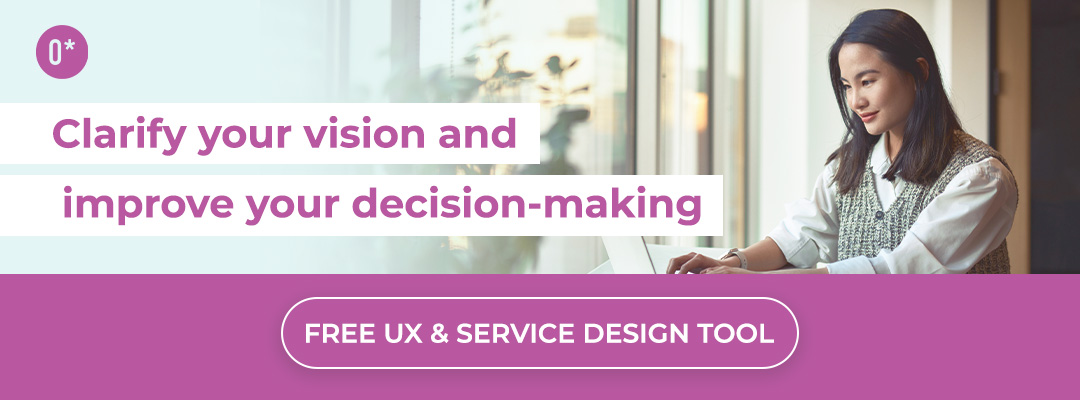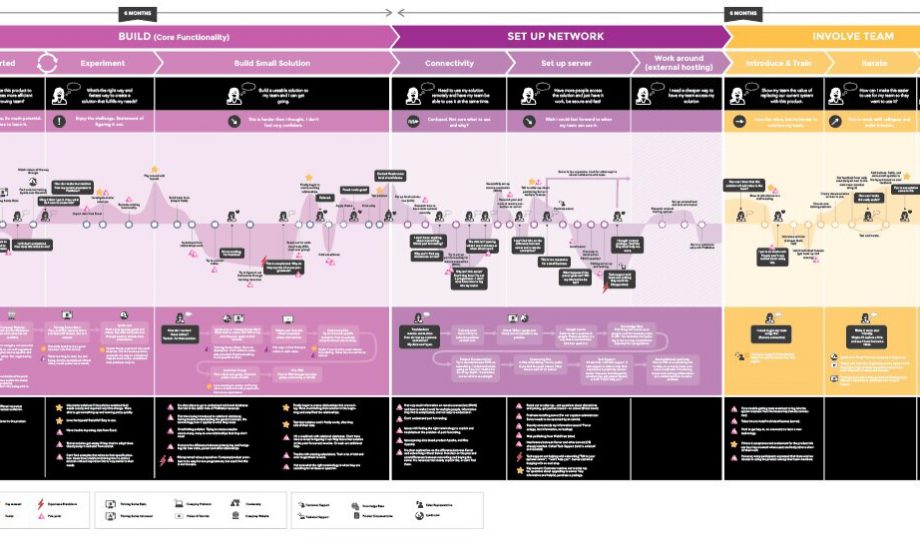In our new two-part Human-Centered Design Blog Series, we cover the following topics:
-
5 Reasons why your Organization Needs Design (this post!)
In Part One, we explored the in’s and out’s of the five-step HCD process: Discover, Define, Design, Prototype & Test, and Plan & Implement. We also offered some ways to get started with HCD at your organization today.
Now we’re going to dive deeper into the high value of design in business, and how design-led organizations are outperforming their competition. You don’t need to take (only) our word for it – the research and data clearly show the power and importance of design-thinking principles for businesses across industries and fields.
Not only can HCD up your revenue and improve your customers’ experiences, it is crucial for making sound and innovative business decisions, and for better aligning your organization’s vision and all C-level executives, departments, and teams.
Here are five reasons why your organization needs human-centered design:
1. Superior Business Performance and Higher Returns on Investment (ROI)
The facts are indisputable: Human-centered design leads to increased business revenue and return on investment for shareholders. The McKinsey Quarterly published a ground-breaking report in 2018 that highlights the high value of design for business. Over five years, McKinsey researchers tracked the design practices of 300 businesses across three industries: medical technology, consumer goods, and retail banking. Using their McKinsey Design Index (MDI), which rates how strong a company is at design, they uncovered a high correlation between a business’ superior performance and its rating on the MDI.
In addition, according to the Design Management Institute, highly design-centric organizations– like Apple, Coca Cola, Ford, and IBM– outperformed their industry counterparts on the S&P index by 211% over ten years. These companies were found to have strong design-focused leadership, award-winning design and innovation, and design-based training across teams.
“2015 results show that over the last 10 years design-led companies have maintained significant stock market advantage, outperforming the S&P by an extraordinary 211%.” – Design Management Institute, Design Value Index
These findings speak for themselves: HCD is crucial to modern business success.
2. Enhanced User and Customer Experience
HCD, at its core, enables organizations to better define customer and user pain points, motivations, and needs as clearly as possible. In turn, customers are happier because their needs and wants are being recognized and prioritized.
User experience research is hugely important in achieving this. For example, by discovering what customers need through qualitative research (including observations, interviews, diary studies, surveys, etc.), human-centered design enables businesses to refine their products, services, and experiences to be user-friendly, efficient, and delightful to use or interact with.
In an article for UXStudio, VP Product and Design for Wanderful Media, David Thomsen, writes that “getting out from behind your desk” to conduct user/customer research is a top condition for improving products and services. Thomsen writes that collecting (and reviewing!) user feedback should be a routine and crucial step for any business.
Never stop asking questions, and make sure you are continually learning from your users.
3. Stronger Research-Backed Business Decisions
HCD is fundamentally based on research with your end-users, and understanding their motivations and latent needs. Acknowledging this early on can result in stronger business decisions and better final product results.
By bringing a design team onto your project–and using HCD research methods and tools like personas and journey mapping in the very early stages–you’ll make sounder, stronger decisions based on research and facts about your user groups… rather than the assumptions or “gut feelings” of senior decision-makers. In fact, McKinsey’s 2018 report shows that it’s very common for senior executives to make decisions based on their “gut” rather than research-based evidence.
Additionally, HCD can reduce churn and the number of iterations needed to produce a high-performing service or product that matches the users’ needs. Without HCD, you risk constantly returning to the drawing board, and spending a lot of money and time implementing yet another change, feature, or product that doesn’t quite work.
Getting it right the first time is possible by asking the right questions from the beginning to inform business decisions.
4. Greater Competitive Advantage and Innovation
In business, innovation–and challenging the status quo–are necessary to achieve real growth. Continuous iteration, the process of constantly discovering new insights about your users and the market, are key to growth, too. This is where human-centered design really comes into play.
The HCD process involves ideation–coming up with many concepts, only to then narrow in on the strongest contenders based on user feedback. The best ideas are those that are viable from a business standpoint, feasible from a resourcing, budget, and technology standpoint, and desirable from a user standpoint (see diagram below). Equally, the natural HCD process of prototyping, testing, and the inclusion of cross-functional teams and perspectives in decision-making all lead to better innovation.
For example, Nike draws on human-centered design for all of its products. According to the Harvard Business Review, other Nike departments are encouraged not to second guess the decisions made by the company’s design team, as they relate to user research, product usability, and aesthetics. And it pays off: in 2014, Nike was ranked by Fast Company as the 7th Most Innovative Company.
5. Improved Company Culture and Team Alignment
Cross-functional decision-making and a clear company vision that incorporates design thinking are very important for ensuring that everyone in your organization is on the same page. By aligning teams and goals, you can immediately avoid the he-said/she-said of decision making, and encourage more stakeholder buy-in throughout the entire product and service development process.
As mentioned above, involving your design team in projects at an earlier stage can not only reduce churn and boost efficiency for all team members, but it can also help to shape wider HCD-based goals for the team, and instruct non-experts about the importance of design-thinking. Teams are generally happier when everyone is on the same page and focusing on the same goals, and a happy team makes for better products and services.
How can you encourage a more HCD-centric mindset in your organization?
With these five arguments for human-centered design in mind, you might be thinking: “Great–I’m convinced! What’s next? How do I shift my project or business towards HCD?” We’ve assembled a list of ways to start you, your team, or your business on a journey towards incorporating human-centered design into all of the work you do.
What can you do to encourage the adoption of HCD in your organization?
-
See where you presently land: take the Design Maturity Survey from UXPro or complete DMI’s Design Maturity Matrix (PDF).
-
Invest time and money upfront in user research, not just at the tail end of a project. Download our Plan A Stellar User Interview Workbook NOW to get you started.
-
Create more leadership positions with designers at the helm, and encourage top-down C-level support for design.
-
Invest in building an in-house design team and involve your designers in very early conversations about product and service development.
-
Reorganize your design team’s management – who is currently managing your designers? Is it engineering, product management, or marketing? If it is, you’ll need to consider building design as a core competency in your organization with its own senior level representation.
-
Contact Outwitly to discuss how we can help you with HCD!
We hope these tips and tools will encourage you to integrate–or to continue integrating– human-centered design into all of your new projects.
Next, check out our blog series all about Research Methods. We begin by exploring best practices, tips, and tricks for conducting in-depth interviews for your next human-centered design project.
Resources we like…
-
Grab a FREE copy of our Plan A Stellar User Interview Workbook to get your user research started!
-
Download Outwitly’s Building a Lasting Vision ebook to craft a set of North Star Principles™!






